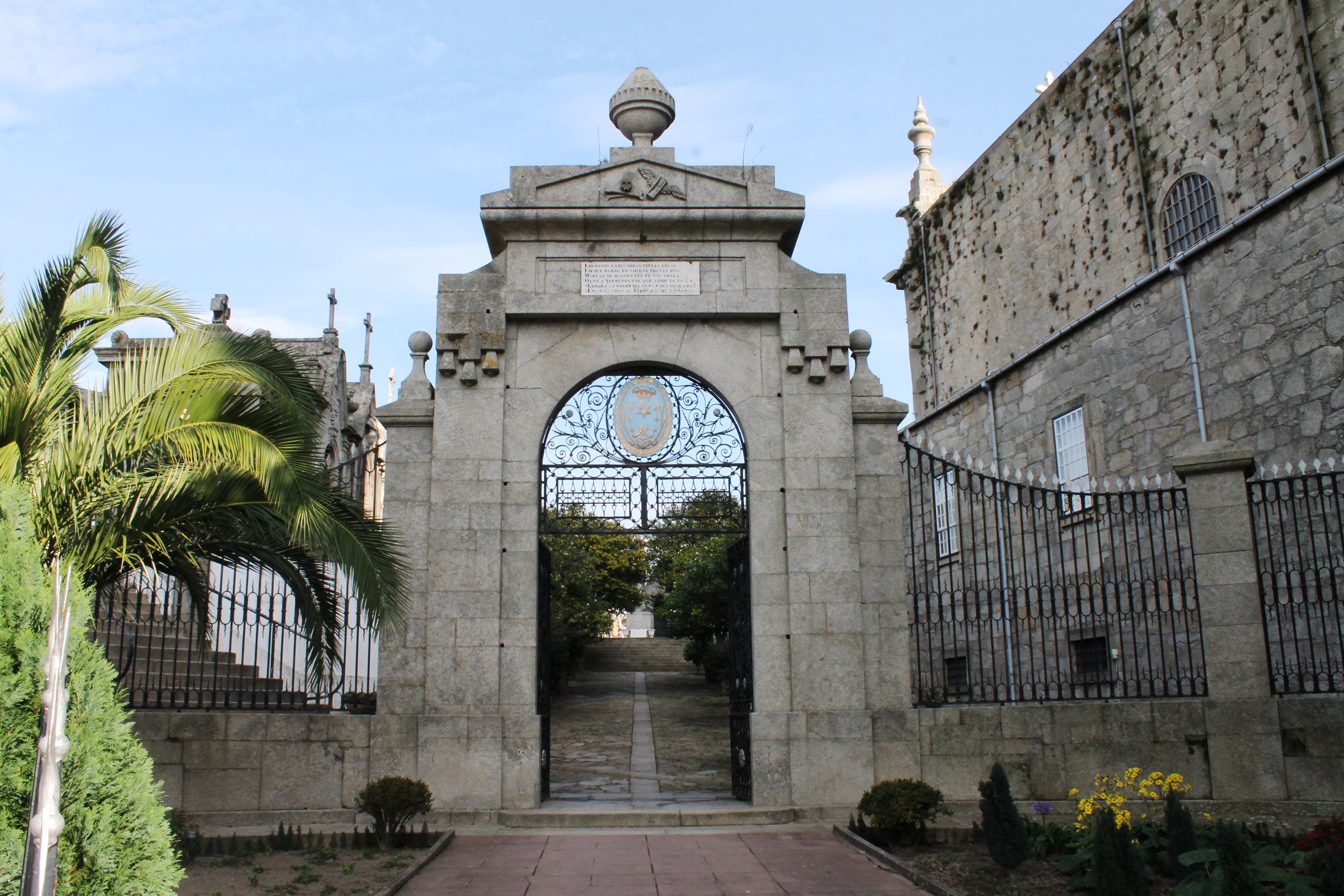
About the cemetery

Founded in 1833 by the Lapa brotherhood, the Lapa Cemetery is the oldest operating private Catholic cemetery in Portugal, established two years before the Portuguese law on public cemeteries. Initially, it functioned provisionally on a plot of land at the back of its church, with the first burial in the definitive cemetery occurring in 1836. The main construction efforts, spearheaded by businessman João da Silva Ribeiro, took place between 1836 and 1840, and the cemetery was consecrated by 1838.
Due to its strong social acceptance, particularly among the wealthier population, the cemetery saw rapid growth. A little over ten years later, the need for expansion arose, and the cemetery was enlarged. Two decades later the cemetery had to be enlarged again and the works were concluded in 1874. The entrance gate was then moved from its original place to where it is today.

Even though it is not a large cemetery, the Lapa Cemetery holds immense historical and artistic significance, particularly in northern Portugal. Some of the first Portuguese romanticist funerary monuments were erected here from 1839 onwards. Several of its most pompous tombs served as inspiration for other cemeteries over the decades. In fact, from its establishment until the end of the 19th century, the Lapa Cemetery was the favourite burial place of the Porto elite.
The establishment of the cemetery is also linked to the important military event of the Siege of Porto (1832-1833), which played a crucial role in the transition to a constitutional monarchy. Notably, the king responsible for this change, Pedro IV, donated his heart to the city, and a monument inside the church next to the cemetery houses this heart, making the entire complex a highly relevant historical site.
Today, the Lapa cemetery attracts many local and foreign visitors. Guided tours, events, and school visits are being organised at the cemetery.
Cemetery architectural and landscape design

The cemetery was designed as a sort of "campo santo", with the central plots for monuments in the form of pedestals, obelisks, or others, and the edges for vault-chapels, which thus enclose the space. However, unlike the typical Italian "campo santo" with porticoes and the most important tombs beneath them, in the Lapa cemetery the construction of the vault-chapels on the edges of the cemetery was left to the discretion of the wealthiest families, resulting in a lack of uniformity and, at the same time, a greater diversity in architectural and iconographic terms. This model of cemetery landscape, which was first applied in Portugal precisely in the Lapa cemetery, was then adopted in dozens of other cemeteries in the northern part of the country.

However, the extensions made to the Lapa cemetery in the 1850s and 1870s did not follow this model: in the upper division of the cemetery, monuments are all in rows, with no intervening paths, and may be small chapels or take on other types (this type of layout is an originality of the cemetery and is not found in any other cemetery in Portugal); in the third division, which corresponds to the final enlargement of the cemetery, monuments are aligned with the streets, as is the case in the two large municipal cemeteries in Porto. Eventually, this final model would also contaminate the oldest part of the cemetery.
By 1910 the cemetery had almost come to a standstill, due to the impossibility of making a new enlargement. With the abandonment and subsequent decay of some of the tombs, namely those whose concessionary families had been extinguished, new tombs were erected at the cost of the demolition of other older ones. Throughout almost the whole of the 20th century there was an impoverishment of the Lapa cemetery. Even so, almost all of its largest tombs remained. The alterations that several of them suffered were due to the concession to other families, leading to the disappearance of the old inscriptions and, in some cases, of portraits, as well as funerary artefacts. In other cases, the tombs their original iron railings.
Address
Largo da Lapa no.14060-069 Porto
Portugal
Contacts
CemeteryPhone: (+351) 223 289 317
Email: cemiterio@irmandadedalapa.pt
Management
Phone: (+351) 225 502 828
Email: geral@irmandadedalapa.pt
Website: www.irmandadedalapa.pt/
Basic data
Year of first burial: 1833Cemetery area: 1,35ha
Number of graves: aprox. 320
Number of burials: aprox. 35.000
Managing organization: Venerável Irmandade de Nossa Senhora da Lapa
